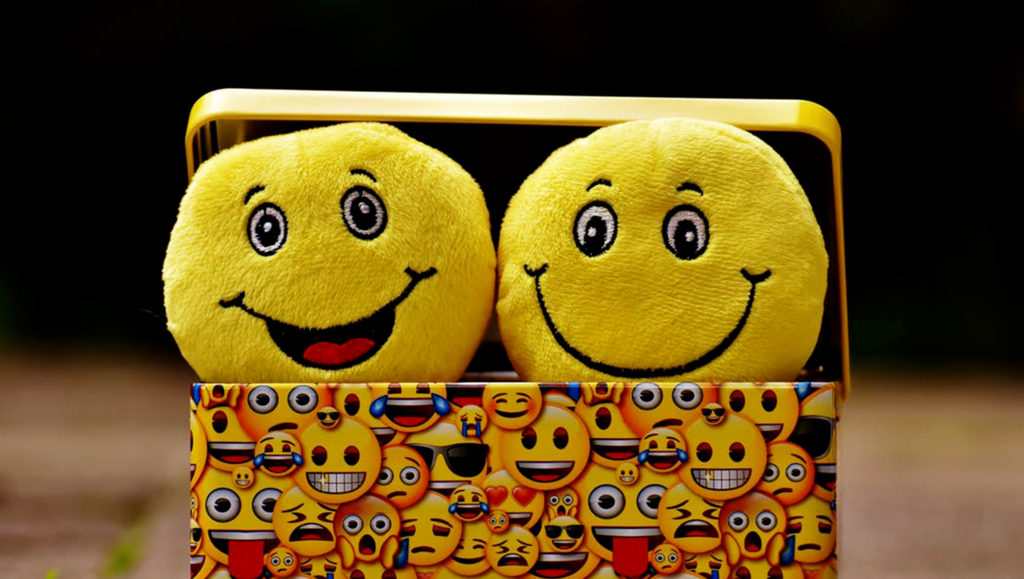 Each year hundreds of new icons are added to the library we use every day on our phones. They give us the ability to choose the right emoji not only to communicate our mood and what we’re up to but also our gender, race and hair color. This year, Unicode has again struck a chord with the introduction of disability-themed emojis.
Each year hundreds of new icons are added to the library we use every day on our phones. They give us the ability to choose the right emoji not only to communicate our mood and what we’re up to but also our gender, race and hair color. This year, Unicode has again struck a chord with the introduction of disability-themed emojis.
Where emojis might once have been considered gimmicks, this latest development shows just how far the format has come. Disability rights campaigners have openly welcomed the new set as an important stride in tackling diversity and inclusion online. Leading platforms such as Twitter have already invested in proving the link between these digital icons and our emotional state, revealing strong marketing apertures.
The new toolset, which includes hearing aids, wheelchairs, prosthetic limbs and guide dogs, carries huge implications for the emotional inclusion and engagement of disabled users. Moreover, this opens up enormous opportunities for healthcare and charitable organizations to engage specific audiences and raise awareness for important initiatives.
Read More: Is PayPal A Good Choice For Small Business Owners?
Emoji Efficacy
First launched in June of 2016, Twitter’s emoji ad targeting gives companies and organizations the ability to connect with people based on the emojis they include in their tweets, which is a lot. According to the website emojitracker.com, the ‘Face with Tears of Joy’ emoji has been used over 2 billion times on Twitter alone.
Even though the ad-targeting feature has been around for nearly two years, some marketers consider emoji targeting to be a fairly new concept when compared to Twitter’s standard ad-targeting options. Meanwhile, many consumers are blissfully unaware of how the process works.
Regardless of the relative nascence of the approach, the results show an impressive impact. In one case, a quick-service restaurant chain that targeted different types of emojis saw engagement rates increase 260 percent. Typically, a 10 percent lift on an ad is a solid result. For the brand, this meant the number of people who responded to the ad went up 2.6 times over traditional ads.
Read More: 6 Reasons Why Customers Can’t Find Your Business Online
Context conundrums
Any organization looking to deploy Unicode’s latest additions must observe the rule of ‘right place, right time’. For emojis, this is made even more acute by the infinite uses people have for these icons that can often go well beyond their originally intended meaning.
A great example of the learnings some brands have gone through is the case of a weather app, looking to engage people in the moment of conducting an activity via icons illustrating different sorts of weather. The brand quickly found that while plenty of uses of the umbrella emoji landed appropriately, there were also plenty of other contexts for the use of the icon, such as ‘you can’t [rain] on my parade’ and ‘[weather] the storm’.
This isn’t an isolated incident. Marketers must remember that emojis go undefined to most of their user base. A study by the University of Minnesota found that about 25% of the time, even when people are viewing the exact same emoji picture on the exact same kind of device, they disagree about whether the emotion being conveyed by the emoji is positive, negative, or neutral.
‘Mad Men’
In a lot of ways, it’s a throwback to the ‘Mad Men’ days of advertising, when marketers were forced to get into the heads of their audience to understand what would lead someone to use a specific emoji, and therefore what marketing message will best match that level of emotion.
Emoji targeting won’t always be suitable. It is most effective when applied strategically and genuinely. Some marketers want to get people to click and take an action right away and other marketers simply want to create engagement with people in a certain frame of mind.
Ultimately, deploying emojis in campaigns can help companies and organizations get more precise about who they’re reaching and the best time to engage them, because an emoji paints a more colorful picture of their audience beyond demographic and geographic information. This is never more important than in the case of harder to reach communities such as those living with, or affected by disability. As ever, the best advice is to apply the golden rule of treating people the way you’d want to be treated.
Read More: Data-Driven And AI-Powered Marketing In 2019 And Beyond





















